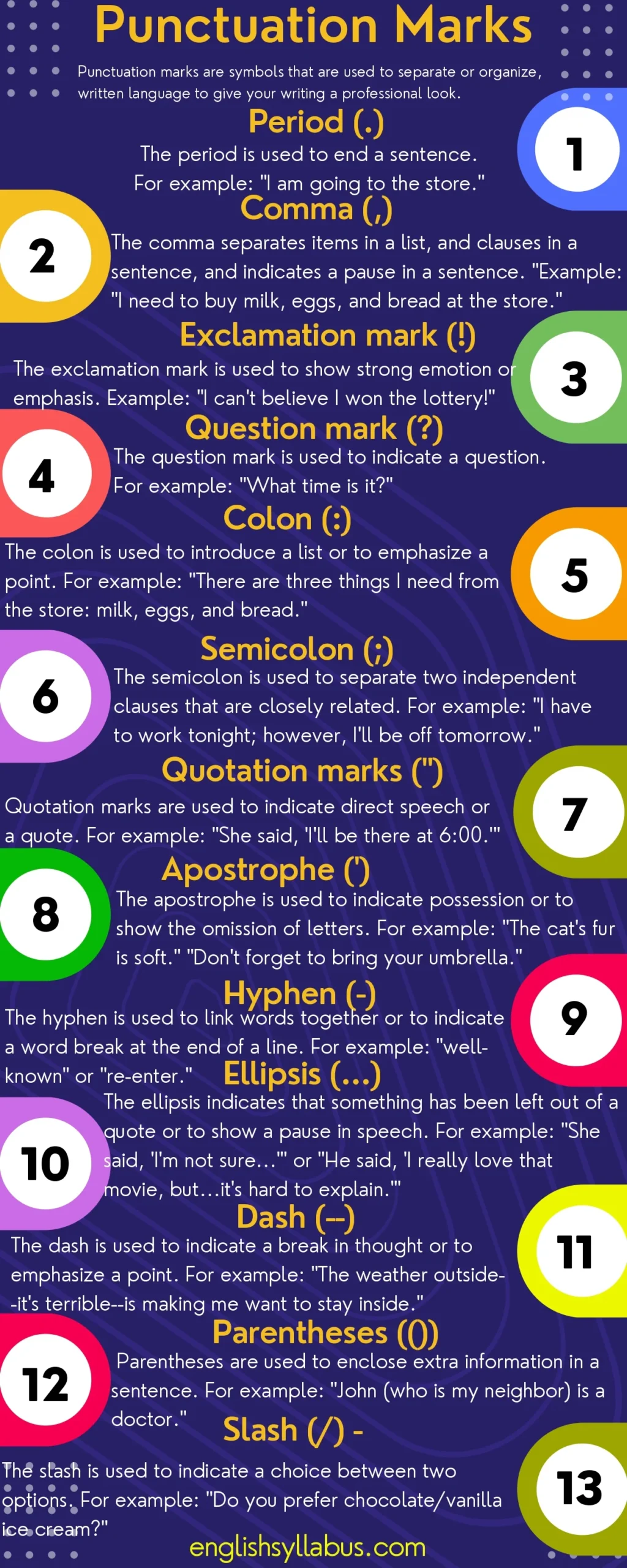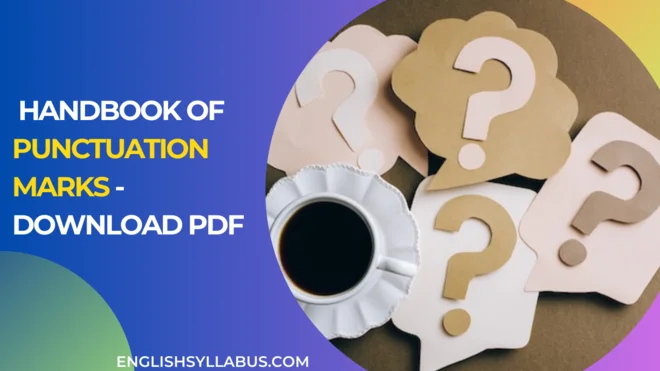Punctuation marks are symbols used to indicate a text’s structure and organization. These marks are important in helping the reader understand a text’s meaning. They can also be used to create a certain effect or mood for aesthetic purposes. To read the Punctuation Marks used in detail you can download the PDF file.
Punctuation marks can be divided into two main categories:
- End marks: These include the period (.), the question mark (?), and the exclamation point (!).
- Internal marks: These include the comma (,), the semicolon (;), and the colon (:).
Table of Punctuation Marks
| Sr. | Symbols | Functions |
|---|---|---|
| 1. | Period (.) | marks the end of a declarative sentence or an abbreviation. |
| 2. | Comma (,) | separates clauses or items in a list. |
| 3. | Semicolon (;) | separates clauses in a sentence, when a comma is not enough. |
| 4. | Colon (:) | introduces a list, explanation, or quotation. |
| 5. | Exclamation mark (!) | indicates strong emotion or emphasis. |
| 6. | Question mark (?) | indicates a direct question. |
| 7. | Apostrophe (‘) | indicates possession, contraction, or omitted letters. |
| 8. | Quotation marks (“) | enclose direct speech or title of a work. |
| 9. | Hyphen (-) | connects words to form a compound word or indicates a word break at the end of a line. |
| 10. | Dash (–) | separates clauses in a sentence, with emphasis on the second clause. |
| 11. | Parenthesis (() ) | encloses a non-restrictive clause or adds supplementary information. |
| 12. | Brackets ([ ]) | encloses information added by someone other than the original writer. |
| 13. | Ellipsis (…) | indicates omitted words or a trailing off in speech. |
| 14. | Slash (/) | separates options or alternatives. |

Download Complete English Punctuation Rules (Marks) Pdf
English Punctuation Rules: Perfect Your Punctuation & Improve Writing by Farlex is an incredibly helpful book for anyone who wants to improve their writing skills. From beginners to advanced writers, this book is an essential guide to mastering the art of punctuation. The book covers a wide range of punctuation marks such as commas, semicolons, colons, hyphens, and dashes, and explains how to use them properly. It also includes helpful tips on how to avoid common punctuation errors, and how to use punctuation to enhance your writing style. What stands out about this book is how it simplifies the complex rules of punctuation, using easy-to-understand examples and practical exercises to help readers master each concept. Overall, English Punctuation Rules: Perfect Your Punctuation & Improve Writing is a must-have book for anyone looking to improve their writing skills and increase their confidence in using punctuation. The Book is also available on Amazon

